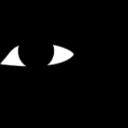Yahoo Answers is shutting down on May 4th, 2021 (Eastern Time) and beginning April 20th, 2021 (Eastern Time) the Yahoo Answers website will be in read-only mode. There will be no changes to other Yahoo properties or services, or your Yahoo account. You can find more information about the Yahoo Answers shutdown and how to download your data on this help page.
Trending News
Calculus Question (x2) Involving Differential Equations?
Hello, recently I've been struggling with 2 questions. I know that the equations are separable, and once separable you have to integrate both sides to find C. Then sub C into the equation and solve for the variable. But so far I'm stuck on these two (I'm getting x(t) = 10 and y = sqrt[((x^2)-144)/2]
These are the two relevant questions in order
Find the solution of the differential equation that satisfies the given initial condition
(dx/dt) = (3/x) , x(0) = 5
Find: x(t) =
(dy/dx) + (y/4) = 0 , y(0) = 14
Find: y =
Any help would be appreciated, whether that be an explanation, a hint.
Thank you
7 Answers
- cidyahLv 73 years agoFavorite Answer
dx/dt = 3/x
separate the variables
3 x dx = 3 dt
Integrate both sides
3 ∫ x dx = 3 ∫ dt
(3) (1/2)x^2 = 3t + C
(3/2) x^2 = 3t + C
x(0) = 5
(3/2)(5)^2 = 3(0) + C
C = 75/2
(3/2) x^2 = 3t + 75/2
multiply both sides by 2/3
x^2 = 6t + 25
x= sqrt(6t+25)
-------------------------
dy/dx + y/4 = 0
dy/dx = -y/4
separate the variables
dy/y = -4 dx
Integrate both sides
∫ dy/y = -(1/4) ∫ dx
ln(y) = (-1/4)x + C1
y = e^(-x/4) e^C1
y = C e^(-x/4)
y(0) = 14
y=14; x=0
14 = C e^0
C = 14
y = 14 e^(-x/4)
- husoskiLv 73 years ago
There's a neat method that nobody who's answered so far seems to use that "bakes in" the initial value, without needing a separate "solve for C" step.
In the first problem, dx/dt = 3/x can be written in separated form:
x dx = 3 dt
Think of the solution as a curve on an x-vs-t graph, Lots of curves work, but you're trying to find the one that passes through the point (t_0, x_0) = (0, 5). Take *definite* integrals:
∫ x dx = ∫ 3 dt .... with limits x=x_0 to x on the left and t=t_0 to t on the right.
x²/2 - 5²/2 = 3t - 0
x² - 25 = 6t
x = √(6t + 25) .... choosing the + root to make (0, 5) work at t=0.
The same approach works on the second problem, but this time I'll wait to plug in those initial values:
dy/dx = -y/4
(1/y) dy = (1/4) dx
Integrate that from y=y_0 to y on the left, x=x_0 to x on the right:
log |y| - log |y_0| = (x - x_0)/4
log |y / y_0| = (x - x_0)/4
Note that this solution can't have y=0 at any point, so the curve of a solution can't cross the x-axis. That means y and y_0 have the same sign and the absolute value bars can be dropped. Then take exponentials and:
y = y_0 * e^[(x - x_0) / 4]
That's the general initial value solution. Get your answer by substituting (x_0, y_0) = (0, 14):
y = 14 e^(x/4)
- cmcsafeLv 73 years ago
1) Cauchy problem
dx/dt=3/x ; with initial condition x(0)=5
1.1 Separate the variables
xdx=3dt
1.2 Integrate both sides
∫x dx=3∫dt
x²/2=3t+C ; C is a generic real constant
x²=6t+k ; k is a generic real constant (we can call it also C)
x=±√(6t+C)
1.3 Initial condition
x(0)=±√(0+C)=5
C=+5²=25
hence the solution of Cauchy problem is x(t)=±√(6t+25)
2. Cauchy problem
dy/dx+y/4=0 ; with initial condition y(0)=14
2.1 Separate the variables
dy/dx=-y/4
dy/y=-4dx
2.2 Integrate both sides
∫1/y dy=-4∫dx
ln|y|=-4x+C
e^ln|y|=e^(-4x+C)=e^C*e⁻⁴ˣ
where C is a generic real constant.
|y|=e^C/e⁴ˣ
hence, two solutions
y=e^C/e⁴ˣ
y=-e^C/e⁴ˣ
2.3 Cauchy problem y(0)=14 is refers to the positive solution,
y=e^C/e⁴ˣ
y(0)=e^C/1=14
The unique solution of our problem is
y(x)=14/e⁴ˣ
- BrainardLv 73 years ago
1) dx/dt = 3/x
xdx = 3dt ...........separating variables
∫ xdx = 3∫dt
x^2/2 = 3t + C
For t = 0. x = 5
25/2 = C
x^2/2 = 3t + 25/2
x^2 = 6t + 25
x(t) = ±√(6t + 25)
2) (dy/dx) + (y/4) = 0
dy/dx = - y/4
dy/y = -1/4dx ...........separating variables
∫(1/y) dy = (-1/4) ∫dx
ln(y) = -x/4 + C
For x = 0, y = 14
ln(14) = C
ln(y) = -x/4 + ln(14)
ln(y) - ln(14) = -x/4
ln(y/14) = - x/4
y/14 = e^(-x/4)
y = 14 e^(-x/4)
- How do you think about the answers? You can sign in to vote the answer.
- ?Lv 73 years ago
(dx/dt) = (3/x) , x(0) = 5
x dx = 3 dt --> x²/2 = 3t + C. The condition says 5²/2 = 3(0) + C thus C = ...
Next one, (dy/dx) + (y/4) = 0 , y(0) = 14
dy/dx = -y/4 --> dy/y = (-1/4) dx --> ln(y) = -x/4 + C ... You can now take it from there.
Done!







